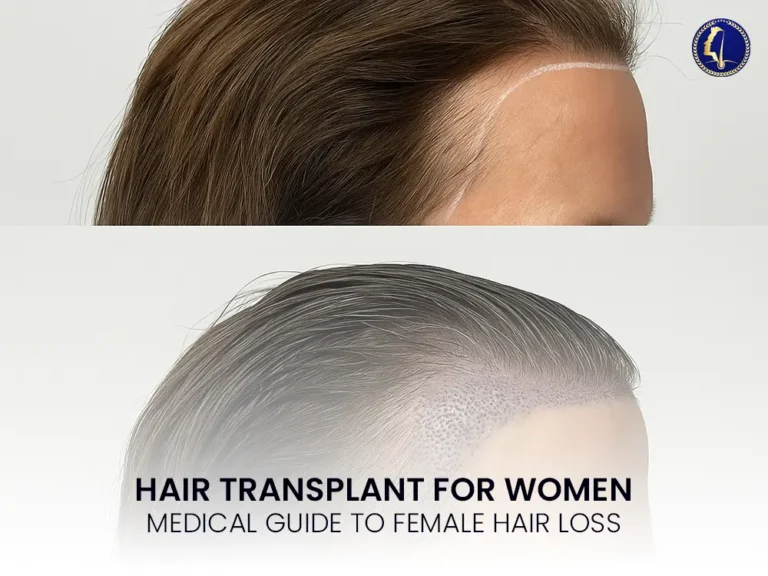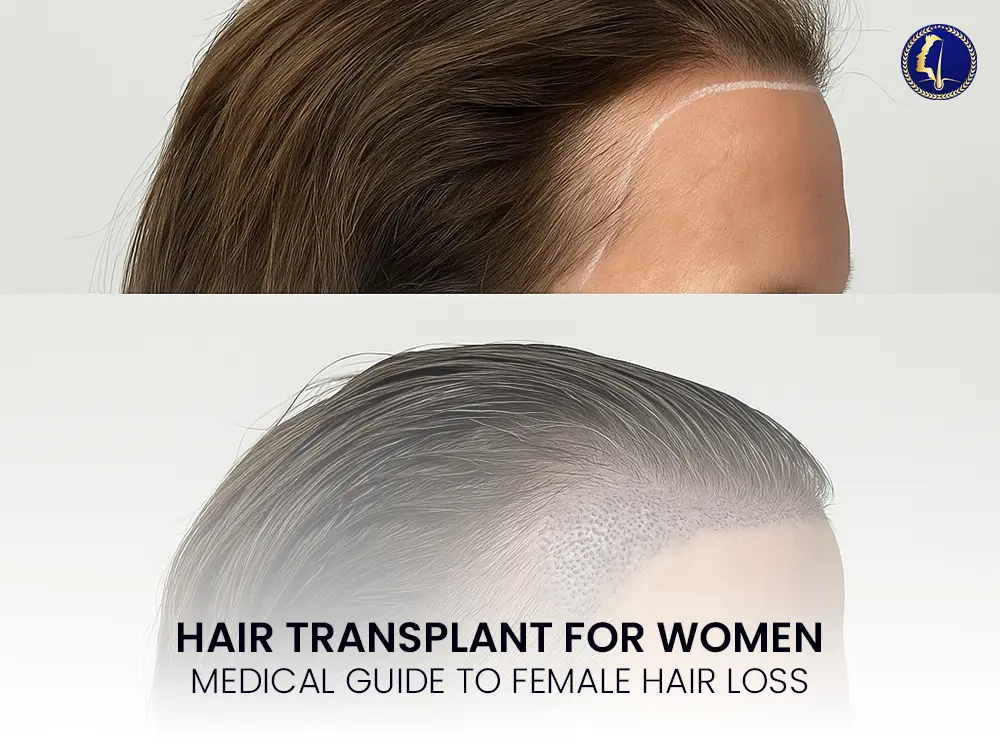Women Hair Transplant
Hair loss in women is a common but often overlooked condition that can cause significant emotional distress and diminished self-esteem. While hair transplants are typically associated with male pattern baldness, they are increasingly recognized as a viable and effective treatment for women experiencing hair thinning or loss. This guide offers a medically grounded overview of the causes, procedures, benefits, and considerations related to hair transplants for women.
Understanding Female Hair Loss
Female hair loss presents differently from male pattern baldness. Rather than forming bald patches or receding hairlines, women often experience diffuse thinning across the entire scalp. The most common causes include:
Genetic Factors: Female pattern hair loss (FPHL) is hereditary and one of the most prevalent forms of hair thinning in women.
Hormonal Changes: Events such as pregnancy, menopause, and thyroid dysfunction can disrupt normal hair growth cycles, leading to temporary or long-term hair thinning.
Medical Conditions: Autoimmune diseases, alopecia areata, and endocrine disorders such as polycystic ovary syndrome (PCOS) are associated with hair loss in women.
Lifestyle and Environmental Factors: Chronic stress, nutritional deficiencies, and damaging hairstyles can contribute to progressive hair thinning.
Candidacy for Hair Transplantation in Women
Not all cases of hair loss in women are suitable for hair transplantation. Ideal candidates typically meet the following criteria:
Localized Thinning: Women who have discrete areas of thinning, rather than diffuse thinning across the scalp, tend to respond best to transplantation.
Adequate Donor Hair: A sufficient and stable donor area, usually located on the back or sides of the scalp, is required for successful graft harvesting.
Realistic Expectations: Candidates should understand the limitations of the procedure and have realistic expectations regarding coverage and density.
A thorough clinical evaluation, including medical history and scalp examination, is essential to determine whether surgical intervention is appropriate.
Hair Transplant Techniques for Women
There are two primary surgical techniques used in hair transplantation for women:
1. Follicular Unit Transplantation (FUT)
A linear strip of scalp is removed from the donor area.
Hair follicles are dissected microscopically and transplanted into the recipient area.
This method is appropriate for patients requiring a large number of grafts.
The procedure may result in a linear scar, which can be concealed with longer hair.
2. Follicular Unit Extraction (FUE)
Individual follicular units are extracted from the donor area using a micro-punch device.
These follicles are then implanted into thinning areas.
FUE is minimally invasive and does not result in a linear scar.
This method has a shorter recovery period and is often preferred for women.
The choice of technique depends on the extent of hair loss, the quality of the donor area, and the patient’s aesthetic goals.
Benefits of Hair Transplantation for Women
Natural Hair Growth: Transplanted follicles grow hair that is genetically permanent, blending seamlessly with the existing hair.
Long-Term Results: Once the transplanted hair begins to grow, the results are typically permanent and resistant to further loss.
Improved Self-Esteem: Restoring hair density often leads to enhanced self-image and psychological well-being.
Low Maintenance: After the healing period, transplanted hair requires no special treatment and can be styled as desired.
Considerations and Potential Risks
Although generally safe, hair transplantation is a surgical procedure and carries some potential risks:
Infection: While uncommon, infections may occur if post-operative care instructions are not followed properly.
Scarring: Particularly with FUT, there may be visible scarring depending on healing and technique.
Graft Failure: Some transplanted follicles may not survive, resulting in patchy or uneven growth.
Shock Loss: Temporary loss of native hair around the transplant site can occur, though it often resolves with time.
Choosing an experienced, board-certified surgeon significantly reduces the likelihood of complications and improves the overall success rate of the procedure.
Recovery and Results
Recovery from a hair transplant is typically straightforward. Most patients experience:
Initial Healing: Mild swelling, redness, and sensitivity in the treated area during the first few days.
Shedding Phase: Transplanted hair may fall out within 2–4 weeks, which is a normal part of the follicular regeneration process.
Hair Growth: New hair begins to grow at approximately 3 to 4 months post-surgery, with full visible results typically achieved within 9 to 12 months.
Patients are advised to avoid strenuous activities, sun exposure, and scalp manipulation during the early recovery phase.
Cost of Hair Transplants for Women
The cost of hair transplantation for women can vary widely, based on:
The number of grafts required
The technique used (FUT or FUE)
The surgeon’s experience and location of the clinic
On average, procedures range from $4,000 to $15,000. A personalized consultation is necessary to obtain an accurate estimate based on individual hair loss patterns and goals.
Frequently Asked Questions (FAQs)
1. Is a hair transplant a permanent solution?
Yes. Transplanted hair follicles are typically resistant to the hormones that cause hair loss and will grow naturally over the long term.
2. Will the procedure leave visible scars?
FUE procedures leave minimal, dot-like scars that are often unnoticeable. FUT procedures may leave a linear scar, which is generally hidden under longer hair.
3. How long does it take to recover from a hair transplant?
Most patients can resume normal daily activities within 5 to 7 days. Complete healing and final hair growth results may take up to one year.
4. Can I style or color my hair after a transplant?
Yes. Once the scalp is fully healed, typically after a few weeks, patients can cut, style, and dye their hair as normal.
5. Are there effective alternatives to surgery?
Non-surgical treatments such as minoxidil, platelet-rich plasma (PRP) therapy, and low-level laser therapy may help slow hair loss or enhance results when used in conjunction with surgical procedures.


